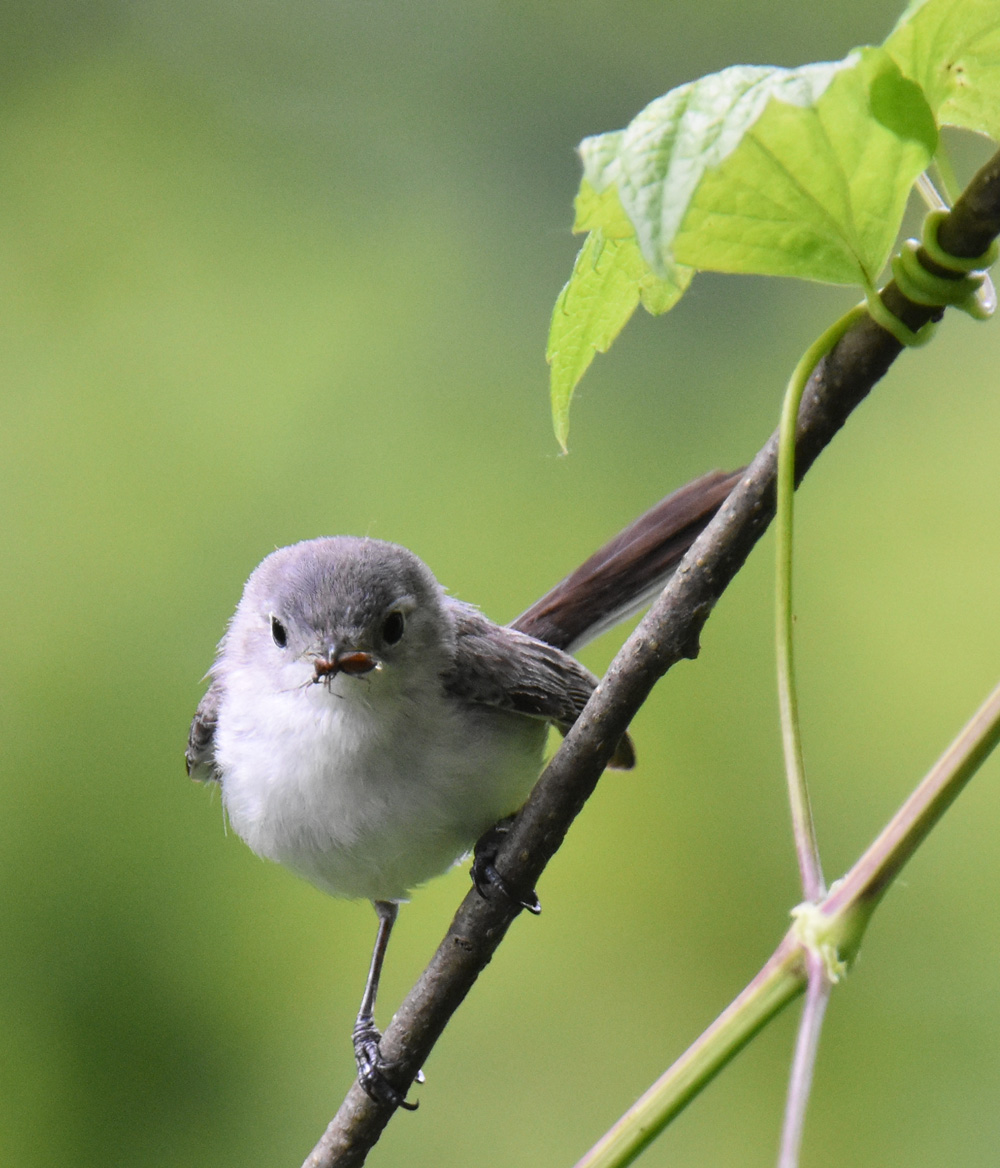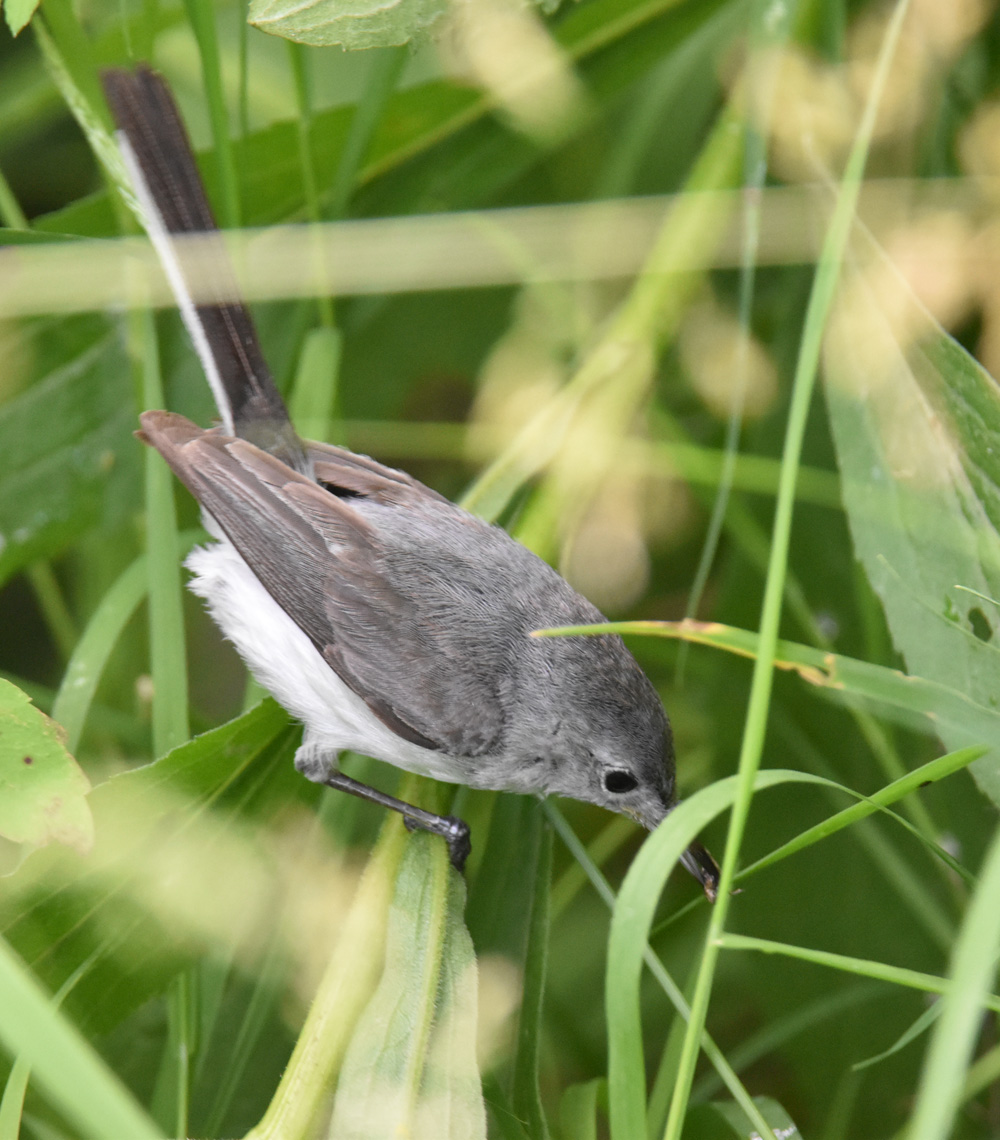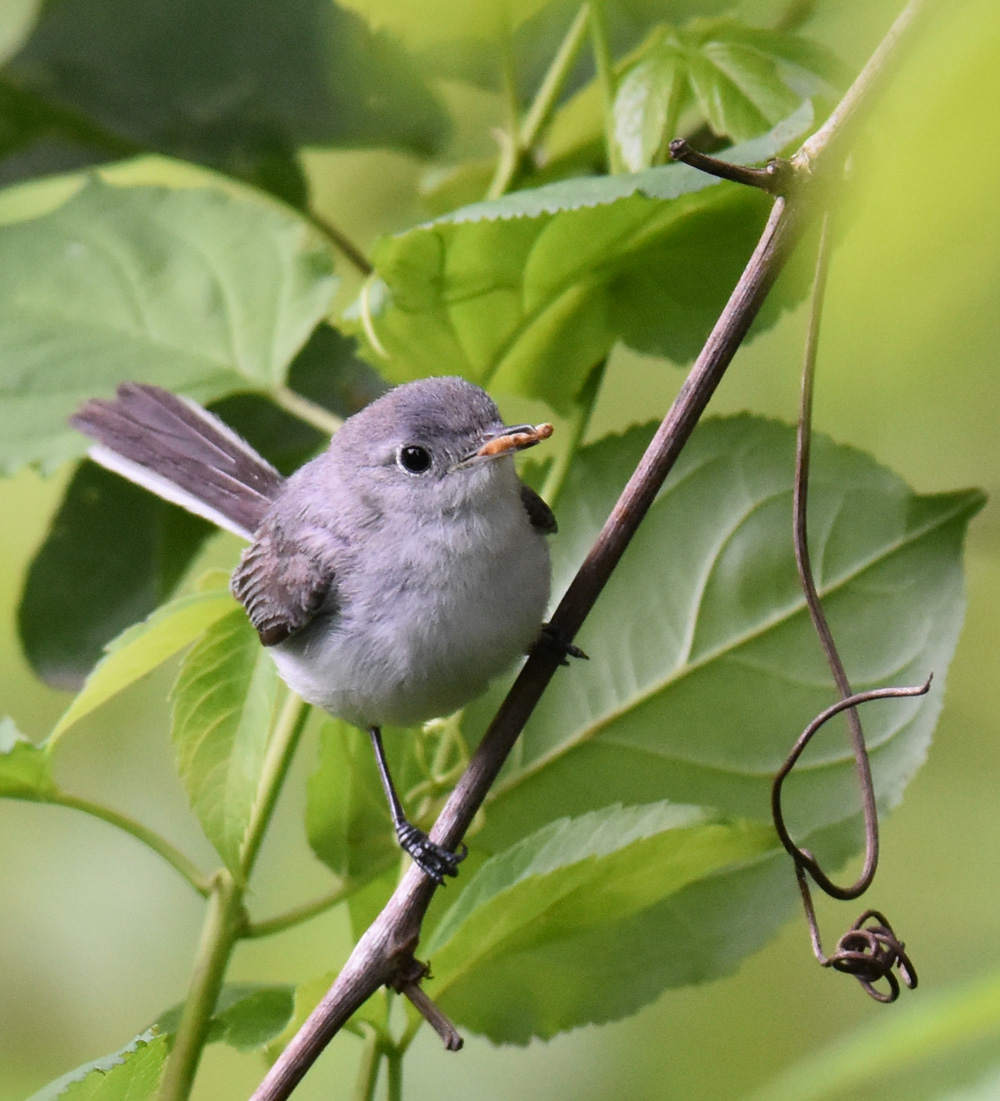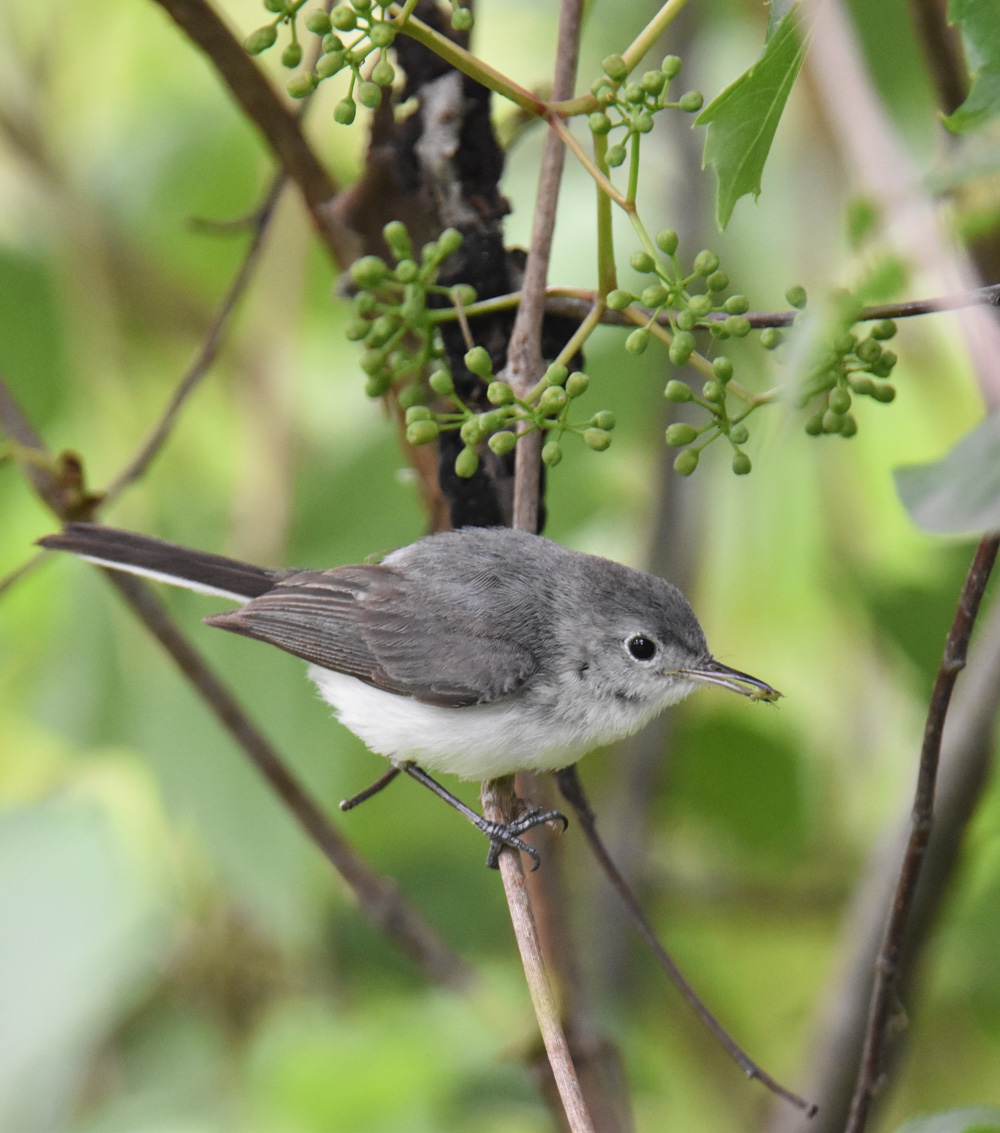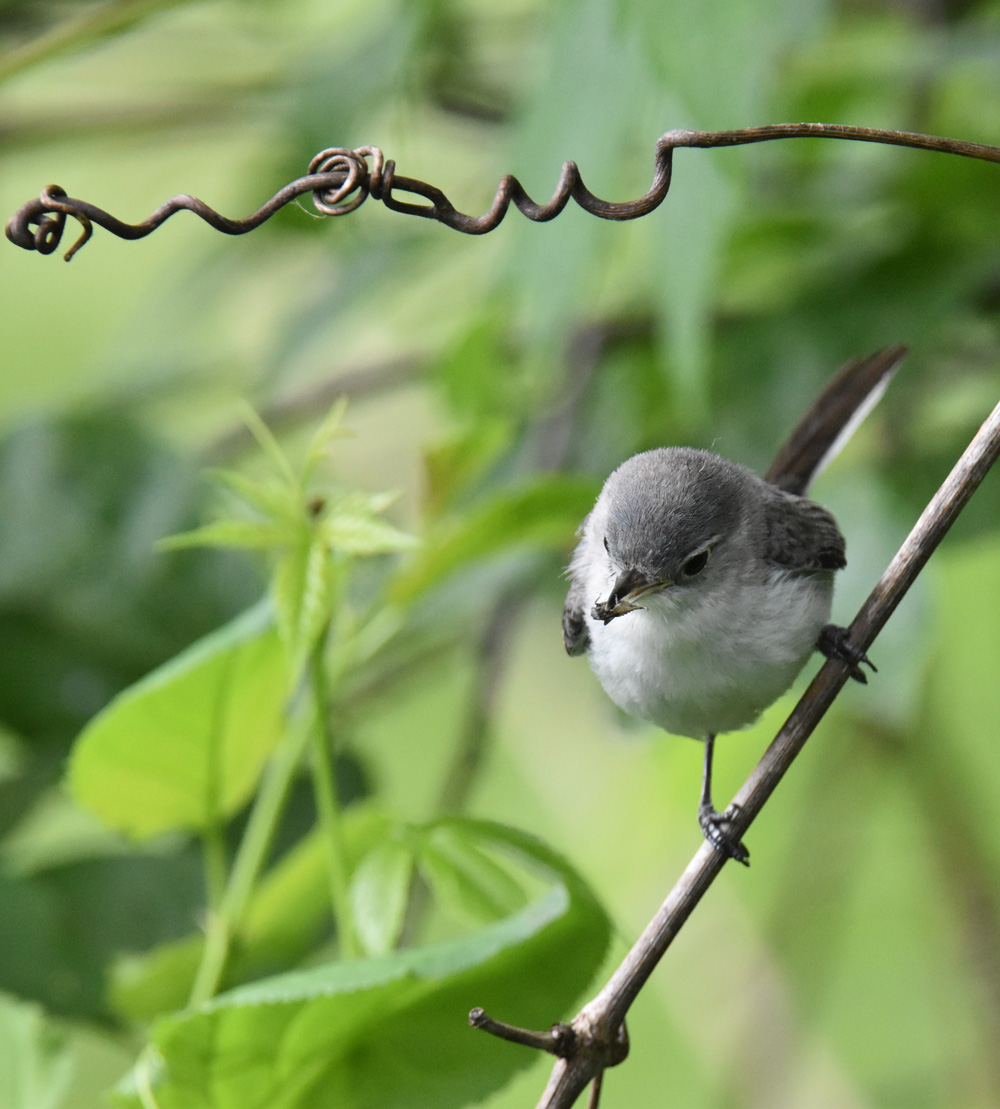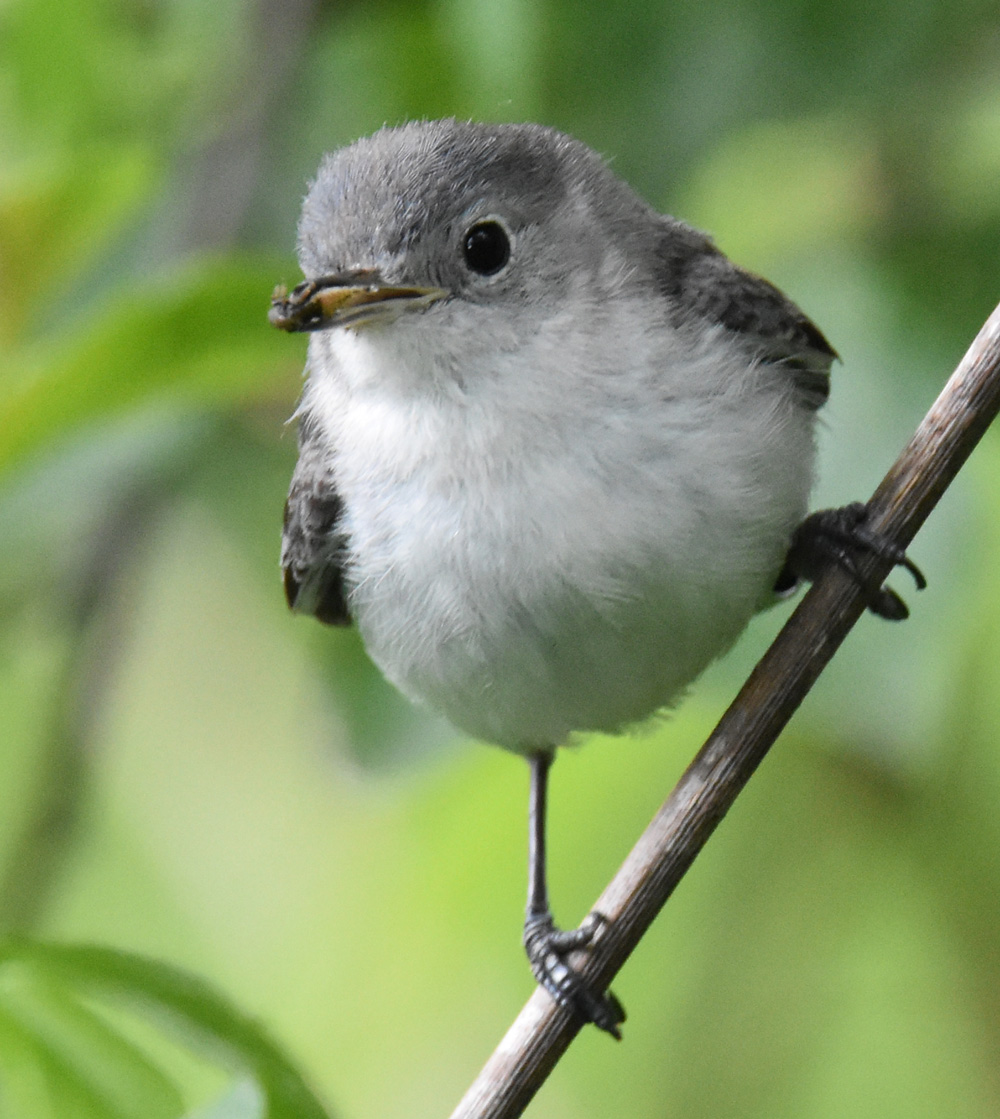One advantage of standing on the path in a park like the Riverwood Conservancy in Mississauga patiently waiting for a butterfly to come back within camera range and land is that other creatures start to ignore you. At the end of June I was standing on the Culham Trail butterfly watching when a Blue Gray Gnatcatcher decided I must be another of those placid big vegetarians, like a White-tailed Deer, and it went back to insect hunting only a few feet away from me.
Nature Photography Tip for the Sensitive: Never Zoom In Too Closely On What a Bird Is Eating
One of the worst things about using a telephoto lens and a high resolution camera is that when you get home and look at your photos, you get to see exactly what birds eat. Sometimes it’s really, really gross. Other times, though, it can help you identify new insects in your area, like the possibility of Leopard Moths at the Rattray Marsh.
Anyway, for the photos here, I won’t zoom in too closely as I don’t want to “bug” anyone!
Goldenrod Serves Up a Feast of Insects for a Patient Blue-gray Gnatcatcher
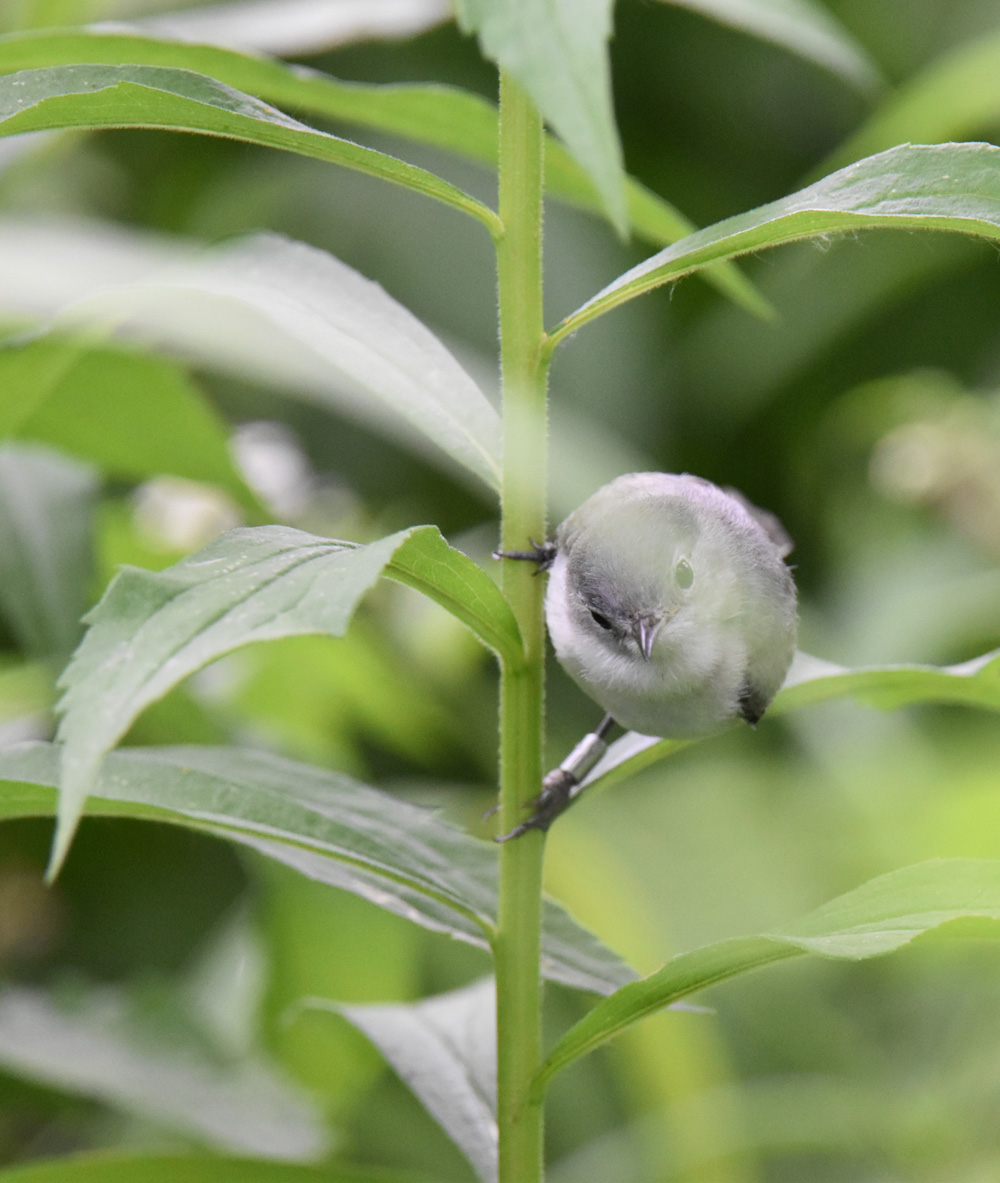
The Goldenrod dwarfs the Gnatcatcher and I noticed something else….
While I was watching, the Gnatcatcher spent most of its time hunting in a large goldenrod patch. It would perch on a twig or on a bit of Virgin’s Bower clematis, then snatch a catch and rest again before eating it. I saw it select more than 4 kinds of insects during a few minutes before it moved on to other activities.
Belated Banded Blue Gray Gnatcatcher Identification
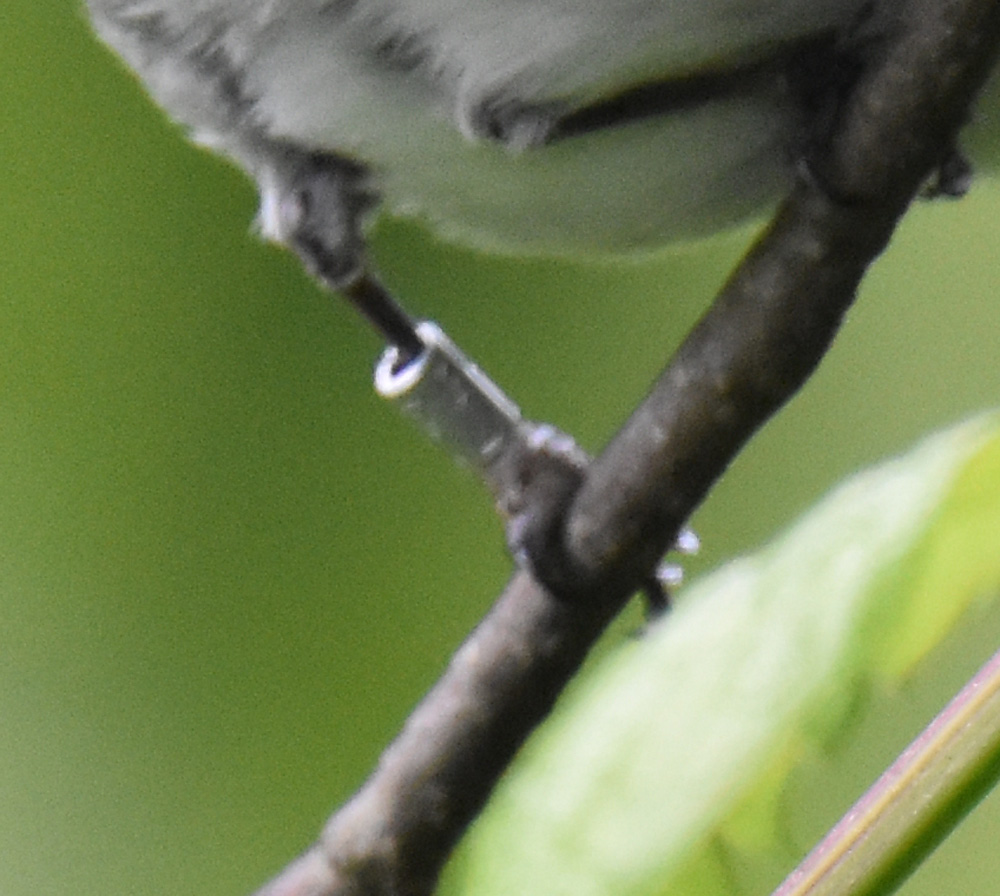
I wish I could read this band!
It wasn’t till two weeks later, when looking at my photos for this article, that I noticed something unusual about this little bird: it’s wearing a silver bracelet. This tiny bird had been banded.
I had thought this was a juvenile Gnatcatcher when I was watching it. I made that mistake mostly because it was plainly coloured and because it was willing to hunt so close to me. (Many young birds are less wary of humans.) I had been surprised at how efficiently it was hunting, catching more than 4 insects in fewer than 2 minutes but that just made me cheerful about its likelihood of reaching adulthood.
Given the band, however, I don’t think it’s a juvenile. I’m not aware of anyone banding in Riverwood and a juvenile would not yet have migrated past any of the common banding sites, like Tommy Thompson Park or Ruthven Historic Site.
Given it’s not a juvenile, I then thought this is most likely a female Blue-gray Gnatcatcher.
Wrong again! Apparently, the females are not grayer than the bluer males. I’ve often seen pairs where that seemed to be the case, but both the AllAboutBirds website and the Sibley’s field guide do not say there is a colour difference between the sexes. So it could be a male or a female.
Why Do I Wish I Could Read and Report the Bird Band Markings?
Alas, none of my photos show the id letters or numbers so I can’t report it to the bird banding authorities. If I could, they could give me interesting information about when it was banded and where. It might tell me how old the bird is or if it has travelled to any exciting destinations.
Of course, I will keep an eye out for it again but there are several pairs of Gnatcatchers at Riverwood and once nesting is complete they will likely disperse and move around. And as anyone who has watched these birds knows, they don’t stay still long. Even if my dozen photos only two show the band on its leg.
Still, it’s nice to have another reason to stop and watch the birds!
Related Reading
- Banded Bird Encounter Reporting
- Blue-Gray Gnatcatchers in Thorny Situation in South Mississauga, Ontario
- Out on a Limb: Look Who’s Nesting in Lakeside Park, Mississauga
- Who Is Pinging Off this Red Tailed Hawk?
Join In
Have you ever reported a banded bird? Please share your story, or sighting of a Gnatcatcher, with a comment.

